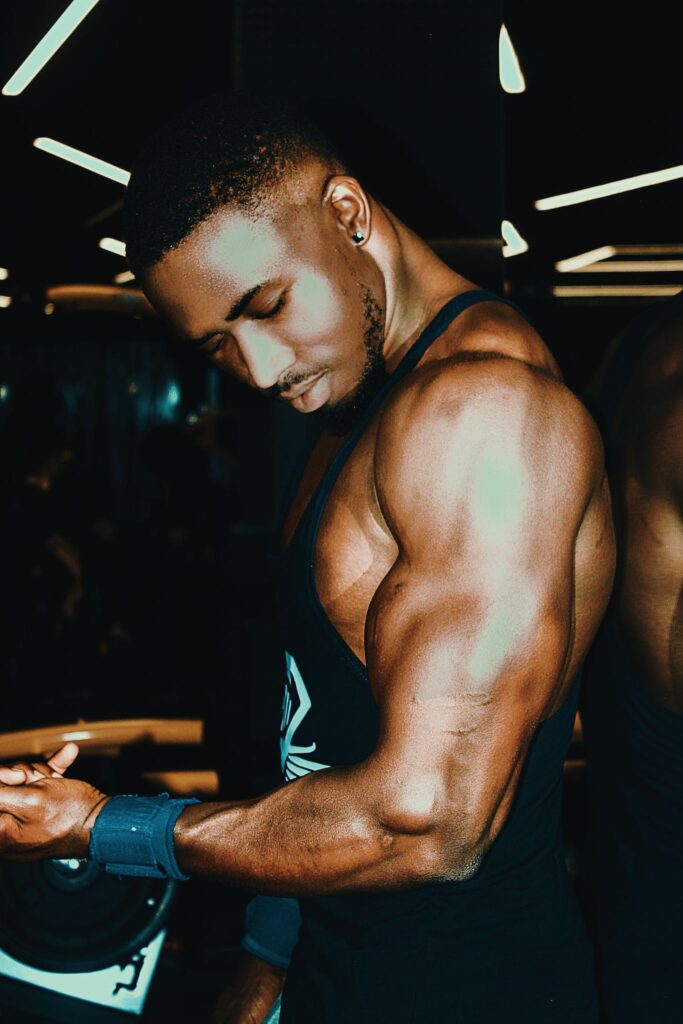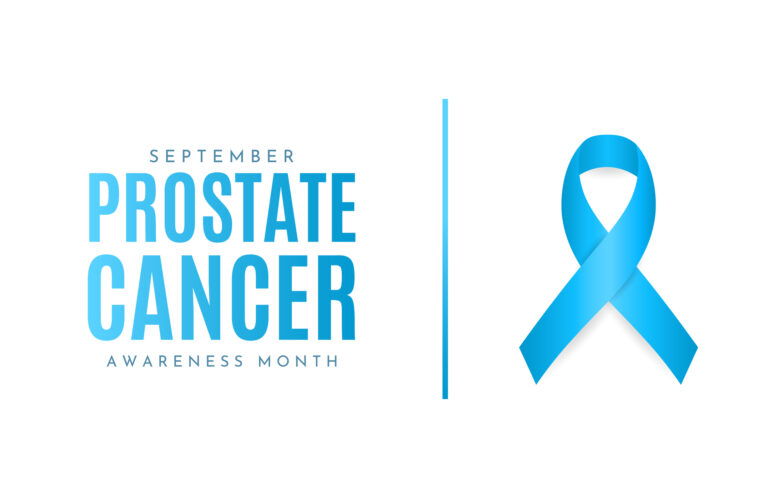The Ultimate Guide to Building Muscle and Boosting Testosterone with Exercise


Table of Contents
Understanding the Role of Testosterone in Muscle Building
Testosterone plays a crucial role in muscle building, serving as the primary male sex hormone responsible for the development and maintenance of male characteristics. While testosterone is naturally produced in both men and women, it is produced in higher quantities in men. This hormone is essential for the growth and repair of muscle tissues, as it stimulates protein synthesis and enhances muscle strength and size.
When testosterone levels are optimal, it promotes the production of insulin-like growth factor 1 (IGF-1), which aids in muscle fiber formation. Testosterone also increases the production of erythropoietin, a hormone that stimulates red blood cell production. With an increase in red blood cells, more oxygen is delivered to the muscles during exercise, leading to improved endurance and performance.
Furthermore, testosterone helps to decrease the production of cortisol, a stress hormone that can break down muscle tissue. By reducing cortisol levels, testosterone helps to preserve and protect muscle mass, aiding in the recovery and repair processes. Additionally, testosterone enhances the body’s overall metabolic rate, promoting the utilization of stored fat for energy and facilitating the development of lean muscle mass.
In summary, testosterone plays an integral role in muscle building by stimulating protein synthesis, enhancing muscle strength, increasing endurance, reducing muscle breakdown, and promoting the development of lean muscle mass. Understanding the importance of testosterone in the context of muscle building can help individuals develop effective strategies to optimize their hormone levels and achieve their fitness goals.
The Science Behind Muscle Growth and Testosterone Production

Muscle growth and testosterone production are intimately connected. Testosterone, a hormone primarily produced in the testes, plays a crucial role in stimulating protein synthesis and muscle tissue repair. It acts as a powerful anabolic agent, promoting muscular hypertrophy and enhancing strength gains.
During exercise, especially resistance training, the body undergoes several physiological changes that influence testosterone production. Physical activity stimulates the release of various hormones, including testosterone, in a dose-dependent manner. Studies have consistently shown that both acute and chronic resistance exercise can significantly increase testosterone levels in men. However, the magnitude of this increase is influenced by several factors, such as exercise intensity, volume, and duration.
Furthermore, adequate nutrition is essential to support muscle growth and testosterone optimization. Several nutrients play a critical role in testosterone production, including zinc, vitamin D, and magnesium. Zinc is required for testosterone synthesis, while vitamin D acts as a regulator of testosterone levels. Magnesium, on the other hand, enhances testosterone bioavailability by inhibiting the binding of testosterone to sex hormone-binding globulin (SHBG).
In conclusion, understanding the intricate relationship between muscle growth and testosterone production is crucial for individuals looking to maximize their gains. Exercise, particularly resistance training, acts as a potent stimulus for testosterone release. Coupled with proper nutrition, including key testosterone-supporting nutrients, individuals can optimize their muscle building and testosterone production journey. It is important to consult with healthcare professionals and qualified experts to ensure personalized guidance and support based on individual needs and goals.
Setting Realistic Goals for Muscle Building and Testosterone Boosting
Setting realistic goals is an essential step in any muscle building and testosterone boosting journey. It is important to have a clear understanding of what can realistically be achieved and to avoid setting unrealistic expectations that could lead to disappointment or even injury.
When setting goals, it is important to consider a variety of factors such as your current fitness level, genetics, lifestyle, and available time for exercise. It is unrealistic to expect dramatic muscle growth or significant increases in testosterone levels within a short period of time. Muscle building and testosterone optimization are gradual processes that require consistency, hard work, and dedication.
It is recommended to consult with a fitness professional or a healthcare provider specialized in male reproductive health to help set realistic goals based on your individual circumstances. They can assess your current fitness level, discuss your expectations, and provide guidance on achievable targets. It is also important to keep in mind that everyone’s body responds differently to exercise and hormonal changes, so what may be realistic for one person may not be the same for another. By setting realistic goals, you can ensure that you are on the right path to achieving your desired muscle building and testosterone boosting outcomes.
Choosing the Right Types of Exercises for Muscle Growth and Testosterone Enhancement

When it comes to building muscle and enhancing testosterone levels, choosing the right types of exercises is crucial. Incorporating a variety of exercises that target different muscle groups can maximize muscle growth and optimize testosterone production.
Resistance training exercises, such as weightlifting and bodyweight exercises, are particularly effective for promoting muscle growth and testosterone enhancement. These exercises create a stimulus that signals the body to build new muscle tissue and release more testosterone. Compound movements, such as squats, deadlifts, bench presses, and pull-ups, engage multiple muscle groups simultaneously, making them highly efficient for muscle growth and testosterone stimulation. Additionally, incorporating both strength training exercises and cardiovascular exercises into your routine can help improve overall fitness and support testosterone levels.
It is important to note that the intensity and volume of your workouts also play a role in muscle growth and testosterone enhancement. Gradually increasing the weight and intensity of your exercises over time, as well as incorporating progressive overload techniques, can stimulate greater muscle activation and testosterone release. However, it is essential to prioritize proper form and technique to minimize the risk of injury and ensure optimal muscle activation. Consulting with a qualified fitness professional can help you design a workout routine that is tailored to your individual goals and needs.
Designing an Effective Workout Routine for Building Muscle and Boosting Testosterone
When designing an effective workout routine for building muscle and boosting testosterone, it is important to incorporate a combination of resistance training and cardiovascular exercises. Resistance training, such as weightlifting, helps stimulate muscle growth by causing microscopic damage to muscle fibers, which then repair and grow stronger. This type of exercise not only improves muscle tone and definition but also increases testosterone levels in the body.
To maximize the benefits of resistance training, it is essential to focus on compound movements that engage multiple muscle groups simultaneously. Exercises such as squats, deadlifts, bench presses, and rows are excellent choices for building muscle and increasing testosterone production. These compound movements also have the added benefit of promoting overall strength and stability.
In addition to resistance training, cardiovascular exercises play a crucial role in a well-rounded workout routine for muscle building and testosterone enhancement. Activities like running, swimming, cycling, or participating in high-intensity interval training (HIIT) can help improve cardiovascular health and increase blood flow to the muscles. This increased blood flow delivers essential nutrients and oxygen to the muscles, aiding in their growth and recovery.
Creating a workout routine that incorporates both resistance training and cardiovascular exercises will help optimize muscle building and testosterone levels. It is important to tailor the routine to individual needs and goals, gradually increasing the intensity and duration of workouts over time. By consistently challenging the muscles and stimulating testosterone production, individuals can achieve not only a more muscular physique but also improved overall health and well-being.
Proper Form and Technique: Maximizing Muscle Activation and Testosterone Release
When it comes to building muscle and optimizing testosterone levels, proper form and technique are crucial for achieving maximum results. By focusing on the correct form during your exercises, you can ensure that the targeted muscle group is activated to its fullest potential. This not only increases the effectiveness of your workout but also stimulates the release of testosterone, a key hormone responsible for muscle growth.
To maximize muscle activation, it’s important to maintain proper alignment and control throughout each exercise. For example, when performing a squat, ensure that your knees are in line with your toes and your back is straight. This not only protects your joints from potential injuries but also ensures that the muscles in your legs and glutes are being properly engaged. Similarly, when performing a bench press, make sure your shoulders, back, and chest are all aligned, allowing for proper muscle activation in these areas.
In addition to proper alignment, controlling the tempo of your exercises can further enhance muscle activation. By slowing down the eccentric (lowering) phase of each movement and maintaining tension in the muscle, you can create greater stimulation and subsequently increase testosterone release. This can be achieved by counting to three when lowering the weight and then exploding upward in the concentric (lifting) phase. By incorporating these techniques into your workouts, you can maximize muscle activation and stimulate testosterone release for optimal muscle growth.
The Importance of Progressive Overload for Muscle Building and Testosterone Stimulation
Progressive overload is a crucial aspect of muscle building and testosterone stimulation. It involves gradually increasing the demands placed on your muscles over time, which forces them to adapt and grow stronger. By consistently challenging your muscles with increasingly difficult exercises or heavier weights, you can stimulate muscle growth and optimize testosterone production.
When you subject your muscles to progressive overload, it sends signals to your body that more muscle tissue is needed to meet the increased demands. As a result, your body responds by synthesizing more proteins and increasing muscle fiber size. This process, known as hypertrophy, leads to improvements in muscle strength and size.
In addition, progressive overload has been shown to have a positive impact on testosterone levels. Testosterone is a hormone that plays a crucial role in muscle building and overall male health. Studies have demonstrated that resistance training, which incorporates progressive overload, can significantly increase testosterone levels in both young and older men.
In conclusion, incorporating progressive overload into your workout routine is essential for promoting muscle growth and optimizing testosterone production. By consistently challenging your muscles and gradually increasing the demands placed on them, you can stimulate hypertrophy and enjoy the benefits of enhanced muscle strength and size, along with potentially increased testosterone levels.
Incorporating Compound Movements into Your Exercise Routine for Optimal Results
Compound movements are an essential component of any exercise routine aimed at optimizing muscle growth and testosterone levels. These exercises involve multiple joints and muscle groups working together, allowing for maximum muscle activation and stimulation of hormonal response. By incorporating compound movements into your workouts, you can achieve greater overall muscle development and enhance the natural production of testosterone in the body.
Some examples of compound movements include squats, deadlifts, bench presses, and pull-ups. These exercises engage large muscle groups such as the legs, glutes, back, and chest, resulting in a higher energy expenditure and greater testosterone release compared to isolation exercises. The compound nature of these movements also promotes coordination and functional strength, which can translate into improved athletic performance and overall fitness.
In addition to their physical benefits, compound movements have been shown to have a positive impact on testosterone levels. A study published in the Journal of Strength and Conditioning Research found that performing compound exercises such as the squat and deadlift resulted in significant increases in testosterone levels compared to isolation exercises like leg extensions. This hormonal response is important for muscle growth and recovery, as testosterone is a key player in protein synthesis and the development of lean muscle mass.
Incorporating compound movements into your exercise routine can be done by including a mix of exercises that target different muscle groups. Aim to perform compound exercises at least two to three times a week, alternating between upper and lower body movements. By doing so, you will not only maximize muscle growth and strength but also promote healthy testosterone levels, resulting in optimal results from your exercise efforts. So, if you’re looking to take your workouts to the next level, make sure to include compound movements in your exercise routine.
• Compound movements are essential for muscle growth and testosterone levels
• They involve multiple joints and muscle groups working together
• Examples include squats, deadlifts, bench presses, and pull-ups
• Engage large muscle groups like legs, glutes, back, and chest
• Promote coordination and functional strength for improved athletic performance
• Have a positive impact on testosterone levels compared to isolation exercises
• Important for muscle growth and recovery through protein synthesis
• Incorporate compound movements by targeting different muscle groups
• Aim to perform them at least two to three times a week
• Alternate between upper and lower body movements
• Maximize muscle growth, strength, and healthy testosterone levels
The Role of Nutrition in Muscle Building and Testosterone Optimization
When it comes to muscle building and testosterone optimization, nutrition plays a crucial role. The food we eat provides the necessary fuel and building blocks for muscle growth, as well as supporting hormones like testosterone. Adequate protein intake is essential, as it provides the amino acids needed for muscle repair and growth. Research suggests that consuming 1.6-2.2 grams of protein per kilogram of body weight per day is beneficial for both muscle building and testosterone production (1). Good sources of protein include lean meats, poultry, fish, eggs, dairy products, and plant-based options like tofu, lentils, and quinoa.
In addition to protein, healthy fats are also important for optimizing testosterone levels. Studies have shown that diets rich in monounsaturated and polyunsaturated fats, such as those found in avocados, nuts, seeds, and fatty fish like salmon, can help support testosterone production (2). It’s also important to include an adequate amount of carbohydrates in your diet, as they provide the energy needed for intense workouts and muscle recovery. Focus on consuming whole grains, fruits, and vegetables for a well-rounded carbohydrate intake. Additionally, staying hydrated is crucial for overall health and muscle function, so be sure to drink plenty of water throughout the day.
Essential Nutrients for Muscle Growth and Testosterone Support
Proper nutrition plays a crucial role in muscle growth and testosterone support. When it comes to achieving optimal results, it is important to focus on consuming essential nutrients that can enhance muscle development and optimize testosterone levels.
One nutrient that is vital for muscle growth and testosterone production is protein. Protein provides the building blocks for muscle repair and growth, as well as assists in the synthesis of testosterone. It is recommended to consume a variety of high-quality protein sources, such as lean meats, poultry, fish, eggs, and plant-based options like beans and legumes.
Another essential nutrient for muscle growth and testosterone support is dietary fat. Healthy fats, such as those found in avocados, nuts, seeds, and olive oil, promote hormone production and help maintain optimal testosterone levels. It is important to include a moderate amount of dietary fat in your diet to support muscle development and overall health.
In addition to protein and dietary fat, other nutrients like vitamins and minerals also play a vital role in muscle growth and testosterone support. For example, vitamin D has been shown to have a positive impact on testosterone levels, while minerals like zinc and magnesium are involved in testosterone synthesis. Including a variety of fruits, vegetables, whole grains, and nuts in your diet can help ensure you are getting an adequate intake of these essential nutrients.
To promote muscle growth and support testosterone levels, it is important to prioritize proper nutrition by including a variety of protein sources, healthy fats, and essential vitamins and minerals in your diet. Maintaining a well-balanced diet that provides all the necessary nutrients can optimize muscle development and enhance testosterone production.
Pre and Post-Workout Nutrition Strategies for Muscle Building and Testosterone Boosting
Pre and post-workout nutrition strategies play a crucial role in promoting muscle building and optimizing testosterone levels. Before embarking on a workout session, it is essential to fuel your body with the right balance of macronutrients to enhance muscle protein synthesis and provide energy for optimal performance.
Protein, a key macronutrient, is particularly important for muscle growth and repair. Consuming a protein-rich meal or snack before your workout can help provide the amino acids necessary for muscle protein synthesis. Opt for high-quality protein sources such as lean meats, poultry, fish, eggs, legumes, or dairy products.
In addition to protein, carbohydrates are essential for providing energy during exercise. Including complex carbohydrates like whole grains, fruits, and vegetables in your pre-workout meal can help sustain energy levels and improve performance. It is also important to stay hydrated by consuming adequate fluids, such as water or sports drinks, before your workout.
After your workout, it is crucial to replenish your body’s energy stores and support muscle repair. Protein consumption post-exercise plays a vital role in promoting muscle protein synthesis, which can aid in muscle recovery and growth. Aim for a combination of protein and carbohydrates within the first few hours after your workout.
Including fast-digesting protein sources like whey protein or amino acid supplements, along with easily digestible carbohydrates such as fruits or sports drinks, can help facilitate the recovery process. Additionally, consuming foods rich in antioxidants can help reduce exercise-induced oxidative stress and promote overall recovery.
Implementing pre and post-workout nutrition strategies tailored to your specific needs can significantly impact muscle building and testosterone optimization. Consulting with a registered dietitian or nutritionist can provide personalized guidance and ensure you are meeting your nutritional requirements for optimal results.
The Importance of Rest and Recovery for Muscle Growth and Testosterone Production
Rest and recovery are crucial components of muscle growth and testosterone production. When you engage in intense physical activity, such as weightlifting or resistance training, microscopic damage occurs to your muscle fibers. This damage needs time to heal and repair. During rest, your body repairs these damaged muscle fibers, making them stronger and bigger than before. Without adequate rest, the muscles are unable to recover fully, leading to a plateau in muscle growth.
Moreover, rest and recovery play a significant role in testosterone production. Testosterone is a hormone that is essential for muscle building and overall strength. Studies have shown that inadequate sleep and overtraining can lead to a decrease in testosterone levels. On the other hand, adequate rest, including both quality sleep and rest days between workouts, allows your body to restore and optimize testosterone production.
In summary, rest and recovery are critical for both muscle growth and testosterone production. Giving your muscles the time they need to repair and grow, along with proper sleep and rest days, will not only lead to optimal muscle development but also support healthy testosterone levels. Emphasizing the importance of rest as part of your fitness routine can help you achieve your muscle building and testosterone enhancement goals.
Supplementing Your Exercise Routine for Enhanced Muscle Building and Testosterone Levels.
Proper supplementation can play a crucial role in enhancing muscle building and optimizing testosterone levels. While a balanced diet is essential for overall health, specific nutrients can further support muscle growth and testosterone production.
One key supplement for promoting muscle building is protein. Protein serves as the building block for muscle tissue repair and growth. Consuming an adequate amount of protein in your diet can help support muscle recovery, increase muscle protein synthesis, and improve overall muscle strength.
Additionally, certain amino acids, such as branched-chain amino acids (BCAAs), have shown potential benefits in enhancing muscle growth and reducing muscle fatigue. BCAAs can be found in various protein sources and can be taken as a supplement. Research suggests that BCAAs may help reduce muscle soreness, support muscle protein synthesis, and improve exercise performance.
Besides protein, other supplements like creatine have also been shown to enhance muscle building and increase testosterone levels. Creatine is a naturally occurring compound found in muscle cells and can be obtained through foods like meat and fish or taken as a supplement. Studies have shown that creatine supplementation can improve muscle strength, power output, and overall lean body mass.
It is worth noting that while supplementation can provide additional support, it should never replace a well-balanced diet. It is always recommended to consult with a healthcare professional or nutritionist before starting any new supplement regimen to ensure it aligns with your specific needs and goals.
References:
1. Pasiakos, S. M., Mcloughlin, T. J., & Lieberman, H. R. (2015). The effects of protein supplements on muscle mass, strength, and aerobic and anaerobic power in healthy adults: a systematic review. Sports Medicine, 45(1), 111-131.
2. Jackman, S. R., Witard, O. C., & Jeukendrup, A. E. (2010). Branched‐chain amino acid ingestion can ameliorate soreness from eccentric exercise. Medicine & Science in Sports & Exercise, 42(5), 962-970.
3. Rawson, E. S., & Volek, J. S. (2003). Effects of creatine supplementation and resistance training on muscle strength and weightlifting performance. Journal of strength and conditioning research, 17(4), 822-831.
What role does testosterone play in muscle building?
Testosterone is a hormone that plays a crucial role in muscle building. It helps in protein synthesis, which is essential for muscle growth, and also promotes the development of lean muscle mass.
How does muscle growth and testosterone production work together?
Muscle growth and testosterone production are closely linked. Engaging in regular exercise and strength training stimulates the production of testosterone, which in turn promotes muscle growth and development.
How can I set realistic goals for muscle building and testosterone boosting?
Setting realistic goals for muscle building and testosterone boosting involves considering factors such as your current fitness level, body composition, and genetic predispositions. It is important to have achievable goals that can be measured and tracked over time.
What types of exercises are best for muscle growth and testosterone enhancement?
Compound exercises, such as squats, deadlifts, bench presses, and pull-ups, are highly effective for muscle growth and testosterone enhancement. These exercises engage multiple muscle groups, leading to greater overall muscle development and testosterone stimulation.
How can I design an effective workout routine for building muscle and boosting testosterone?
Designing an effective workout routine involves incorporating a combination of strength training exercises, focusing on compound movements, and allowing adequate rest and recovery time between workouts. Progressive overload, gradually increasing the intensity of your workouts, is also important for muscle building and testosterone stimulation.
Why is proper form and technique important for muscle activation and testosterone release?
Proper form and technique during exercise ensure that the target muscles are effectively activated, leading to optimal muscle growth and testosterone release. Incorrect form can lead to muscle imbalances, injuries, and reduced testosterone production.
How does progressive overload contribute to muscle building and testosterone stimulation?
Progressive overload, gradually increasing the intensity, weight, or volume of your workouts, is necessary for muscle building and testosterone stimulation. It challenges the muscles, forcing them to adapt and grow, while also encouraging the body to produce more testosterone.
What are compound movements and why are they important for optimal results?
Compound movements are exercises that involve multiple muscle groups and joints. They are important for optimal results because they stimulate the production of testosterone and promote overall muscle growth, as they target several muscles simultaneously.
What role does nutrition play in muscle building and testosterone optimization?
Nutrition plays a crucial role in muscle building and testosterone optimization. Consuming a balanced diet with adequate protein, carbohydrates, and healthy fats supports muscle growth, while specific nutrients like zinc, vitamin D, and magnesium are essential for testosterone production.
What are some essential nutrients for muscle growth and testosterone support?
Essential nutrients for muscle growth and testosterone support include protein, which provides the building blocks for muscle repair and growth, as well as vitamins and minerals like zinc, vitamin D, and magnesium that are directly involved in testosterone production.
What are pre and post-workout nutrition strategies for muscle building and testosterone boosting?
Pre-workout nutrition should focus on consuming carbohydrates and protein to provide energy and support muscle growth. Post-workout nutrition should prioritize protein intake to aid in muscle recovery and repair, which indirectly supports testosterone production.
Why is rest and recovery important for muscle growth and testosterone production?
Rest and recovery are crucial for muscle growth and testosterone production. During rest periods, the body repairs and rebuilds muscle fibers, while testosterone levels naturally increase. Insufficient rest can lead to overtraining, muscle fatigue, and reduced testosterone production.
How can I supplement my exercise routine for enhanced muscle building and testosterone levels?
Supplementing your exercise routine can involve using natural testosterone boosters, such as tribulus terrestris or ashwagandha, that can help optimize testosterone levels. Additionally, protein supplements like whey protein can aid in muscle recovery and growth when consumed as part of a balanced diet.







